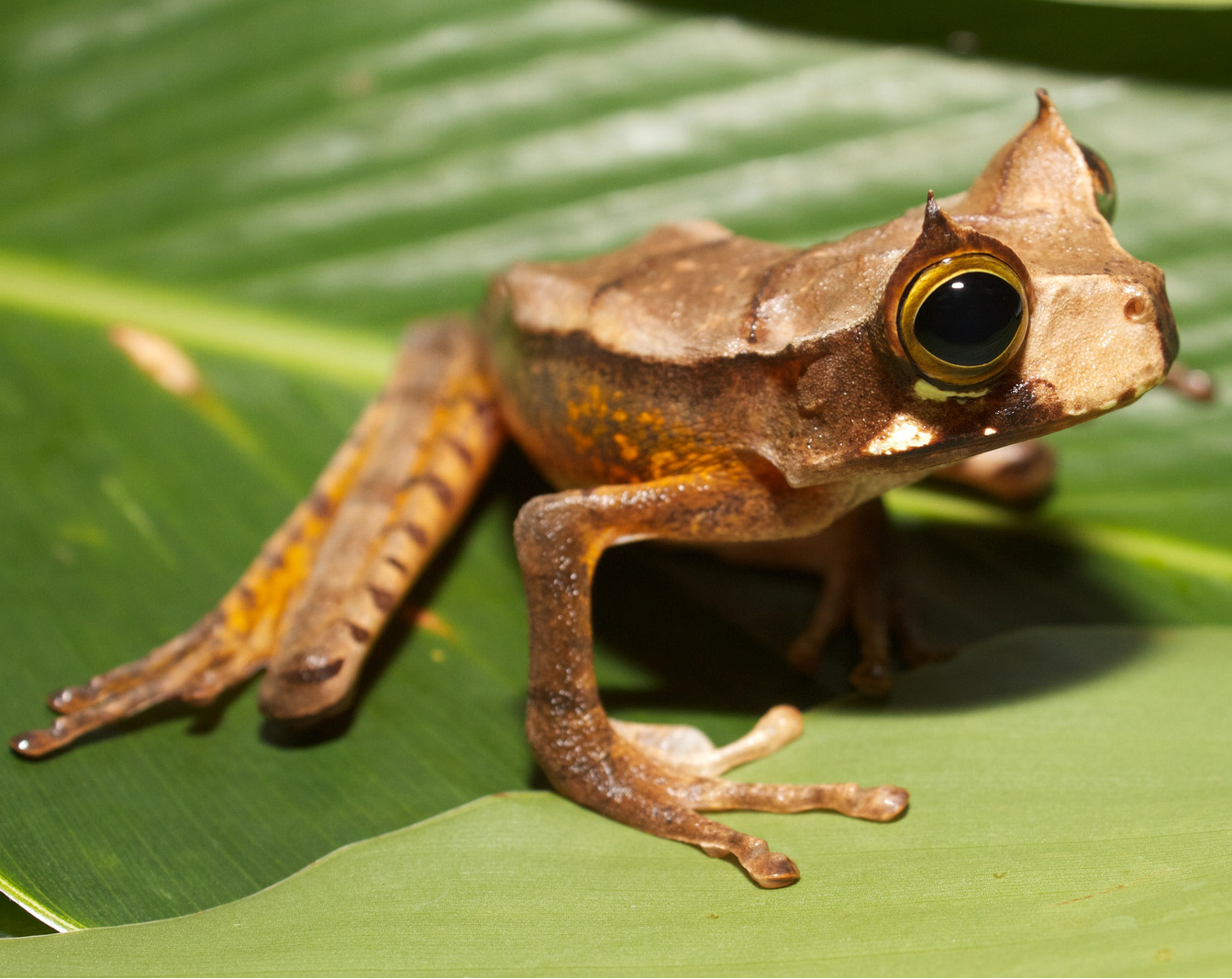There is more scope for eyes in air than in water because light passes through air with fewer disturbances, for this eyes must be kept moist and free from dirt.
Thus sight has become the dominant sense in terrestrial amphibians which can see distant objects better than the aquatic forms.
The eyeball is spherical, the sclerotic is made of dense connective tissue containing some cartilage, and the cornea is curved outwards and is rounded, so that the anterior chamber is large.
ADVERTISEMENTS:
The iris has well developed circular and radial muscles which are partly under the control of the autonomic nervous system but are also directly sensitive to light and they can dilate or reduce the pupil.
The retina has rods and cones, there are two kinds of rods, red rods with visual purple or rhodopsin, and green rods with visual green, but there is no colour vision.
Posteriorly the retina has an area centralis with yellow pigment, it contains only cones. The ciliary body is attached to the sclerotic and posterior surface of the iris, but it has no ciliary muscles.
ADVERTISEMENTS:
From the ciliary body arise a complete ring of suspensory ligaments which are jointed to the lens capsule.
The lens is rounded but more flat than in fishes. On the dorsal and ventral side are protractor lentis muscles, each running from the cornea to the ciliary body and suspensory ligaments.
Accommodation for near objects is brought about by the protractor lentis muscles moving the entire lens forward towards the cornea, in doing so the outer surface of the lens may become slightly flattened.
Other muscles called masculus tensor chorioidea run radially around the lens, they help the protractor lentis muscles in accommodation, they are probably the forerunners of the ciliary muscles of higher forms. Thus the frog can clearly focus not only near objects but also distant ones.
ADVERTISEMENTS:
Well developed eyelids appear for the first time in air, the lower eyelid is more movable and its upper border forms a transparent nictitating membrane which is probably not homologous with that of higher forms since it arises from one eyelid.
The nictitating membrane can be pulled rapidly over the cornea, thus it protects and cleans the eye.
A retractor bulbi muscle pulls the nictitating membrane upwards and a levator bulbi muscle pulls it downwards lo fold it below the lower eyelid.
Glands of the eye appear for the first time in terrestrial amphibians, below the lower eyelid are lacrimal glands, their secretion called tears or lacrimal fluid keeps the eye moist and clean, they nourish the cornea, the tears are drained from the eye into the nose through a lacrimal duct A Harderian gland develops during metamorphosis and lies in the inner angles of the eye in the orbit, its oily secretion lubricates the nicitating membrane.

